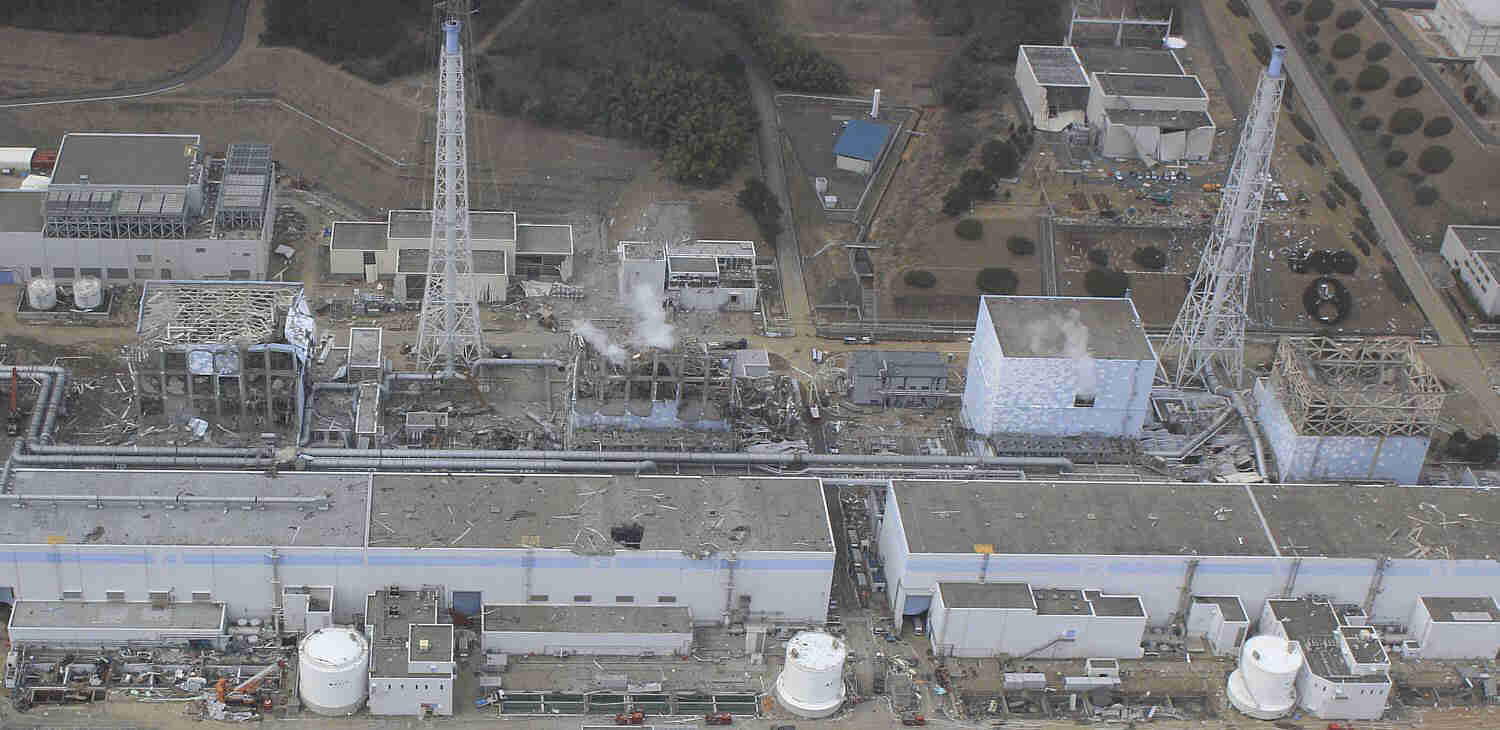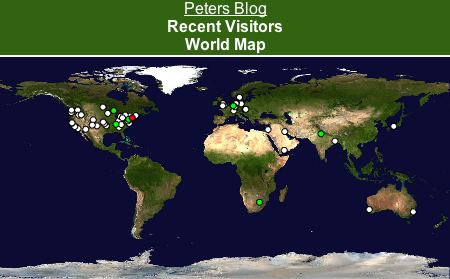“During the week from March 11, I thought several times that I would die.”Director of the Fukushima Dai-ichi Nuclear Power StationMasao Yoshidain his interview with Asahi Shimbun published online Nov. 13, 2011 under the headline "Nuke plant director: 'I thought several times that I would die.'"Looking back on 2011, the year reminded us ever more strongly of our limited power of comprehending risk. The two statements above epitomize the most consequential technological failure of 2011.
“It was a crucial moment when I wasn't sure whether Japan could continue to function as a state.”Prime Minister of Japan His Excellency Naoto Kan published online in The Japan Times under the headline "Tokyo faced evacuation scenario: Kan" published online Sep. 19, 2011.
The islands of Japan are home to a variety of toads. The video below shows a large specimen of Bufo japonicus formosus or アズマ - 比企ガエル in Japanese. I suppose the people of Japan are well acquainted with this creature.
Toads are not appreciated enough. Important lessons can be learned from the simple behaviors these creatures afford. Neuroethology is a science that examines the nerve cell mechanisms that govern animal behavior. In my post with the title "Prof. Ewert's Toad" published online Dec. 21, 2011, I describe research of the German neuroethologist Jörg-Peter Ewert and his colleagues on the prey catching and predator fleeing of toads.
Prof. Ewert and his colleagues were able to dissect the toads' catching and flight into components of sensory perception and action. The investigators identified nerve cells in the toad's brain crucial to these behaviors. Moreover, they could develop computer models of artificial nerve cell networks emulating the toad's identification of prey or foe and the subsequent decision to attack or retreat. In short, the components of this network can be divided into excitatory nerve cells compelling the toad into action and inhibitory nerve cells that curb one mode of response, that is attack, in favor of the other, that is retreat. Prof. Ewert used these insights to develop software, guiding industrial robots with pattern recognition.
I have been cradling Professor Ewert's fascinating observations in my mind since the beginning of this year. Last March 11, the greatest nuclear reactor accident since Chernobyl in 1986 began to unfold at Fukushima Dai-ichi Nuclear Power Station in the wake of the Tohoku-oki Earthquake and Tsunami.
 |
| Fukushima Dai-ichi Nuclear Power Station before Mar. 11, 2011. Reactor units 1(right) - 4 (left) are seen in the foreground, units 5 and 6 are further in background (top left) (courtesy cryptome.org) |
 |
| Fukushima Dai-ichi Nuclear Power Station after hydrogen explosions in the week after the Mar. 11, 2011, earthquake and tsunami. The explosions devastated the buildings of Units 1(right), 3 and 4. Unit 4 was not operating. The reactor incurred no fuel meltdown. By contrast, the fuel in units 1, 2 and 3 melted down and highly radioactive matter was released in amounts rivaled only by those released after the Chernobyl reactor accident (courtesy cryptome.org) |
In the nine months that have passed since the accident, the operator of the Fukushima Dai-ichi Nuclear Power Station Tokyo Electric Power Company, has accomplished stable cooling of the still hot, molten mass of fuel and debris inside the highly compromised reactor buildings. The Japanese government is confronted with a massive environmental clean-up of the radioactive contamination. The challenges involved are unprecedented and daunting. The long-term effects on public health are unknown. Billions of yen will have to be spent to mitigate the damage.
Before this accident, nuclear power generation was considered safe in Japan. How was it possible that the most unthinkable scenario could happen three times in a row? How could the risk of nuclear power generation be that miscalculated?
Why we fail in our risk assessment has preoccupied generations of scholars. Charles Perrow's remarkable book with the title "Normal Accidents: Living with High-Risk Technologies
Our brain takes decisions not unlike the toad's brain. In an area of cerebral cortex known as supplementary motor area for example, excitatory and inhibitory nerve cell inputs weigh in to promote or avert action (Jun and others, 2010; Lo and others, 2009).
Similar to a reverse Mandelbrot set, the fashion in which the nerve cells in our brain interact determines our behavior, which determines how we interact with each other, which determines the structure of human organizations.
Just as the brain consists of networks of nerve cells, human organizations consist of networks of people. Therefore, our mind cannot help, but act adhering to the brain's principles on the next higher level, that is inter-personal social interactions.
Each human enterprise comprises of members who wish to press forward with a promising idea, and members who demand moderation. In as much as the toad's brain, our brain balances cost against benefit. Factions within our organizations constantly struggle with each other over reward-versus-risk estimates. As long as checks and balances are built into our enterprises, we may succeed. By contrast, if one faction dominates the decision making process, either nothing can be achieved, or reckless risk-taking prevails. Through examination of small nerve cell assemblies in the brain, we may therefore attain an improved understanding on how human organizations must function to be successful.
The Fukushima reactor meltdowns represent an example that the unthinkable can happen. The presumption that the reactor design implemented at Fukushima was safe to withstand any fathomable seismic impact had dominated the views of the experts in the field since the inception of the commercial use of nuclear power. Japanese experts now readily acknowledge that the nonchalant attitude that has dominated the nuclear power industry in their country and its governmental regulatory body, the Nuclear and Industrial Safety Agency, (NISA), led to grave underestimations of risk for nuclear power reactors in earthquake and tsunami prone regions (NHKWorld News report with the title "Nuclear experts rethink their future" published online Sep. 20, 2011). Hierarchical report structures steeped in age-old traditions that permeate public and private endeavors like the Amakudari culture of Japan favor top-down instruction, vulnerable to perpetuate flaws in assumption.
In art, music and social relations, Japanese cherish harmony perhaps more than other cultures. Acclaimed medieval warriors like Miyamoto Musashi are equally known for their accomplished works of art, striving for harmony. Yet, like the nerve cells in our brain, our minds struggle every day with conflicting goals and ideas. Shinmen Mushashi represents an excellent example of this antagonism contained in the life of one person. This struggle must be allowed room for consensus to achieve the best possible outcome.
Nerve cell networks have evolved over eons, continuously improving our brain's design. Perhaps, the principles of neuroethology can help us improve the organization of human enterprises, and Professor Ewert's observations, models and simulations on the nerve cell networks underlying simple behaviors may be particularly informative, providing insights into the necessary components and strength of their relationships underlying successful social decision making. Hopefully, we can make use of such knowledge in the new year to develop a better understanding of risk that affects us all.
Acknowledgement
I thank Prof. J.-P. Ewert for teaching me about the neuroethology of toads. I thank Ranulfo Romo and Jeff Schall for sharing their insights into nerve cell mechanisms involved in decision making in the primate cerebral cortex. I am further indebted to simplyinfo.org and the commenters on www.scribblelive.com/Event/Japan_Earthquake5 for keeping me abreast on the latest developments in Japan.






